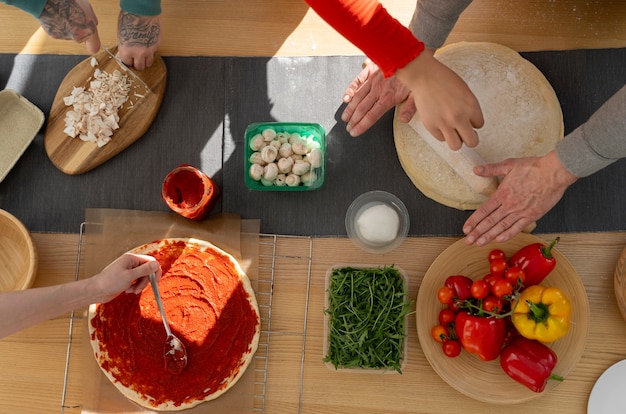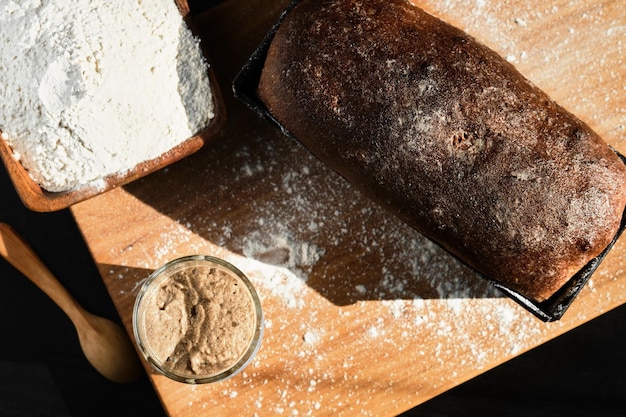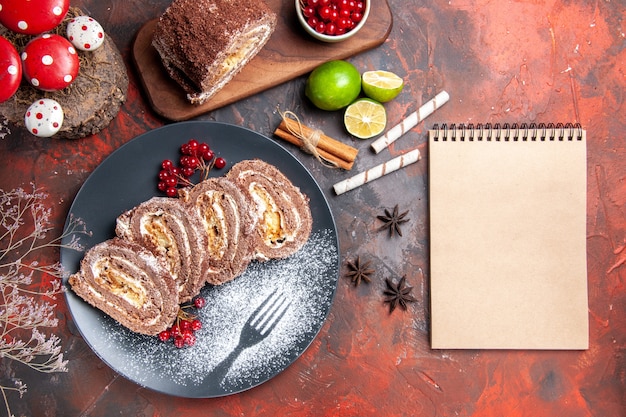Let's face it, meatloaf is a culinary classic for a reason. It's comforting, versatile, and always a crowd-pleaser. But there's one question that pops up every time: how long do you bake it at 375 degrees? It's a crucial step to ensure your meatloaf is cooked through and has that perfect texture and flavor. So, let's delve into the world of meatloaf baking and uncover the secrets to achieving that golden-brown, juicy masterpiece.
Part 1: The Foundation - My meatloaf recipe

Now, I wouldn't call myself a culinary wizard, but I've been making meatloaf for years, and I've honed my recipe to perfection (or at least to my own tastebuds!). It's a simple recipe, but it's packed with flavor and yields a consistently delicious result.
Ingredients:
- 1.5 kg (3.3 pounds) minced beef - For a truly satisfying meatloaf, I recommend using a mix of lean and fattier cuts. This creates a balance of texture and flavor.
- 1 large onion, finely chopped - The onion adds a subtle sweetness and depth of flavor to the meatloaf.
- 2 cloves garlic, minced - A touch of garlic is essential for that savory kick.
- 1 cup breadcrumbs - Breadcrumbs are the binder that helps hold the meatloaf together and create a lovely texture.
- 1 egg, beaten - The egg acts as a binder, helping the meatloaf hold its shape and adding moisture.
- 1/2 cup milk - Milk adds extra moisture and helps create a tender texture.
- 1 tablespoon Worcestershire sauce - This adds a savory umami flavor and helps deepen the overall flavor profile.
- 1 teaspoon dried thyme - A little thyme goes a long way, adding an earthy note that complements the beef perfectly.
- 1 teaspoon salt - Salt enhances the flavors of all the ingredients.
- 1/2 teaspoon black pepper - Black pepper adds a touch of spice and heat.
- 1/2 teaspoon paprika - Paprika adds a subtle smokiness and a beautiful color to the meatloaf.
Instructions:
1. Preheat your oven to 375 degrees Fahrenheit (190 degrees Celsius). This is absolutely crucial! Make sure your oven is fully preheated before you put your meatloaf in; otherwise, it might not cook evenly. Trust me, I've learned this the hard way!
2. In a large bowl, combine all the ingredients. Gently mix them together until they are just combined. You don't want to overmix, as this can lead to a tough meatloaf. We want a tender, juicy meatloaf, not a brick!
3. Shape the mixture into a loaf and place it in a baking dish. For an extra layer of flavor, try adding some bacon strips on top. Bacon adds that smoky, salty goodness that takes your meatloaf to another level.
4. Now comes the baking time: 1 hour and 15 minutes. But hold on, this is just a general guideline. The actual baking time can vary based on the size and shape of your meatloaf. So, how do you know when it's truly done?
Part 2: Decoding Doneness - Making Sure It's Cooked Through

The ultimate rule with meatloaf (and any meat for that matter) is to ensure it's cooked through. No pink meat, no matter how tempting it might look. Here's how to check if your meatloaf is ready to eat:
The Thermometer Test:
This is the most accurate way to ensure your meatloaf is cooked to perfection. Insert a meat thermometer into the thickest part of the meatloaf. It should reach an internal temperature of 160 degrees Fahrenheit (71 degrees Celsius). If it's not quite there, bake it for a few more minutes until it hits that temperature.
The Finger Test:
This test is less precise, but it can be handy if you don't have a meat thermometer. Gently press the center of the meatloaf. If it feels firm and springy, it's likely cooked through. If it's still soft and squishy, it needs more time in the oven.
The Visual Test:
Trust your eyes! The meatloaf should be nicely browned on the outside, and the juices should run clear. If you see any pink juices, it's not cooked enough. It's always better to err on the side of caution. If you're unsure, bake it for a few more minutes rather than risk undercooking.
Part 3: Tailoring Cooking Time to Your Meatloaf

We've covered the general baking time for a standard meatloaf, but things can change depending on its size and shape. Let's dive into some variations:
Smaller Meatloaf:
For a smaller meatloaf, around 1 kg (2.2 pounds), reduce the cooking time to about 50-60 minutes. Remember to always check the internal temperature using a thermometer, or use the other methods to ensure it's cooked through.
Larger Meatloaf:
For a larger meatloaf, exceeding 1.5 kg (3.3 pounds), add 15-20 minutes to the baking time. Keep a close eye on it and adjust as needed. A helpful tip is to cover the meatloaf loosely with aluminum foil for the first 45-50 minutes to prevent it from drying out. This will help ensure a moist and tender meatloaf.
Meatloaf in a Loaf Pan:
When using a loaf pan, the baking time can be slightly different. A standard loaf pan might require a slightly longer baking time, while a smaller loaf pan might need a shorter time. It's all about adjusting to your specific pan.
Remember, these are just general guidelines. The actual baking time will vary based on your specific oven, the size of your meatloaf, and the ingredients you use. It's always best to check for doneness before assuming it's ready.
Part 4: Tips for a Meatloaf that Will Impress
Over the years, I've learned a few tricks to elevate my meatloaf game. Here are some tips to help you create a truly impressive meatloaf:
Don't Overmix:
Overmixing the meatloaf mixture can lead to a tough and dry result. Gently mix the ingredients until they are just combined. That's it!
Use a Mix of Meats:
Using a combination of lean and fattier ground meats will result in a more flavorful and juicy meatloaf. For example, you can use a mix of ground beef, veal, and pork. This creates a delicious balance of flavor and texture.
Add Some Flavor:
Don't be shy with your seasonings! You can add other spices like garlic powder, onion powder, or even a pinch of cayenne pepper for a bit of heat. You can also add chopped herbs like parsley or rosemary for a more robust flavor profile.
Add a Glaze:
For a beautiful, glossy finish and extra flavor, apply a glaze to the meatloaf during the last 15 minutes of baking. I love a simple tomato-based glaze, but you can use a variety of options, including barbecue sauce, brown sugar, or even a mustard-based glaze.
Let it Rest:
After you take the meatloaf out of the oven, let it rest for 10-15 minutes before slicing. This will allow the juices to redistribute, resulting in a more tender and moist meatloaf.
Part 5: The Importance of Baking Time - More Than Just Cooking It Through
Now, you might be thinking, "Why is baking time so important?" Well, it's not just about ensuring the meat is cooked through. It also affects the texture and flavor of your meatloaf. Let's break it down:
Undercooked:
If you undercook the meatloaf, it will be raw and potentially unsafe to eat. It will also have a mushy texture and lack flavor.
Overcooked:
Overcooking the meatloaf can lead to dryness and a rubbery texture. It can also result in a meatloaf that's tough to slice and not very appealing.
The Perfect Bake:
When you bake your meatloaf for the right amount of time, you achieve the perfect balance of texture and flavor. It will be tender, juicy, flavorful, and a real delight to eat.
Part 6: Exploring meatloaf variations
You don't have to stick to the classic meatloaf recipe. Get creative and try different variations. Here are a few ideas:
Cheesy Meatloaf:
Add shredded cheese to the meatloaf mixture for a cheesy, gooey delight. Cheddar, mozzarella, or Monterey Jack all work well. You can even use a combination of different cheeses. This is a crowd-pleaser, I can tell you! Everyone loves a bit of cheesy goodness.
Veggie Meatloaf:
For a lighter and healthier option, add chopped vegetables to the meatloaf mixture. Mushrooms, carrots, celery, and zucchini all work well. You can also use a combination of different vegetables. This is a great way to sneak in some extra nutrients and make your meatloaf even more flavorful.
Italian Meatloaf:
Add Italian flavors to your meatloaf by incorporating ingredients like sun-dried tomatoes, olives, and fresh herbs like basil and oregano. You can even add a bit of Parmesan cheese for extra flavor. This version is full of sunshine and Italian goodness.
BBQ Meatloaf:
For a more barbecue-inspired flavor, add bbq sauce to the meatloaf mixture or glaze it with BBQ sauce during the last 15 minutes of baking. This will give your meatloaf a smoky, tangy flavor. You can also use your favorite BBQ sauce. This is a great option for a summer barbecue or a backyard cookout.
Part 7: Serving Up Your Meatloaf Masterpiece
Now that you've made your perfect meatloaf, it's time to serve it up! Here are a few suggestions:
side dishes:
Meatloaf pairs well with a variety of side dishes. Some popular choices include:
- mashed potatoes - A classic pairing that offers creamy comfort.
- green beans - A healthy and refreshing contrast to the richness of the meatloaf.
- Macaroni and cheese - A cheesy indulgence that perfectly complements the meatloaf.
- corn on the cob - A sweet and summery side that adds a touch of freshness.
- baked potato - A hearty and filling side that can be topped with various toppings.
You can also get creative with your side dishes and try something new.
Garnish:
For a finishing touch, garnish your meatloaf with fresh parsley, chives, or a drizzle of balsamic glaze. This will add a pop of color and flavor.
Enjoy!
Don't forget to savor each bite of your delicious, homemade meatloaf. It's a true labor of love, and it's sure to please everyone at the table.
Part 8: FAQs - Answering Your Meatloaf Queries
Now, I know you might have some burning questions. So, here are a few frequently asked questions and their answers:
Q1: Can I freeze leftover meatloaf?
Yes, absolutely! You can freeze leftover meatloaf for up to 3 months. To freeze, wrap it tightly in plastic wrap or aluminum foil, and then place it in a freezer bag. When you're ready to eat it, thaw it overnight in the refrigerator and reheat it in the oven.
Q2: What if my meatloaf is sticking to the baking dish?
This can be frustrating, but it's easily solved. To prevent your meatloaf from sticking to the baking dish, grease the dish with butter or cooking spray. You can also line the dish with parchment paper for even easier cleanup.
Q3: Can I use different types of bread for the breadcrumbs?
Absolutely! You can use different types of bread for the breadcrumbs, such as white bread, wheat bread, or even crackers. Just make sure you pulse them in a food processor or crush them by hand until they are fine crumbs.
Q4: Can I add other ingredients to my meatloaf?
Your creativity is the limit! You can add a wide variety of ingredients to your meatloaf, such as chopped vegetables, herbs, spices, cheeses, or even a bit of chopped bacon.
Q5: How long can I keep meatloaf in the refrigerator?
You can keep leftover meatloaf in the refrigerator for up to 4 days. Store it in an airtight container in the refrigerator. After 4 days, it's best to throw it out.
Part 9: Conclusion - Your Journey to Meatloaf Mastery
There you have it! My complete guide to making a perfect meatloaf. Baking time is crucial to achieving the perfect texture and flavor, but it's not just about the time. It's about understanding your oven, checking for doneness, and being willing to adjust as needed. Remember, even experienced cooks sometimes have to adjust their recipes based on the circumstances. With a little practice and patience, you'll be making mouthwatering meatloaves in no time. Happy baking!
Do you have any tips or tricks for making meatloaf? Share them in the comments below!
Everyone is watching

Corn on the Cob: The Ultimate Guide to Perfectly Cooked Ears
Healthy MealsAh, corn on the cob. Just the name evokes images of sunny days, barbecues, and that sweet, juicy flavour that ...

Perfect Pork Roast Oven Cooking Time: A Guide to Delicious Results
Healthy MealsThere's something truly satisfying about a perfectly roasted pork. The aroma alone is enough to make your mout...

Scallops: The Ultimate Guide to Perfect Cooking
Healthy MealsAh, scallops. Those delicate, sweet, and utterly delicious morsels of the sea. They hold a special place in my...

Ham Cooking Time: How Long to Bake, Smoke, or Boil a Delicious Ham
Healthy MealsAh, ham. It's a classic, isn't it? A real crowd-pleaser, especially around holidays. And when done right, it'...

Spaghetti Squash: The Ultimate Guide to Cooking and Serving
Healthy MealsRemember that time you saw spaghetti squash at the supermarket, looking all bumpy and strange, and thought, "W...
